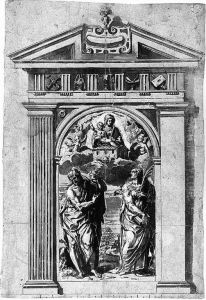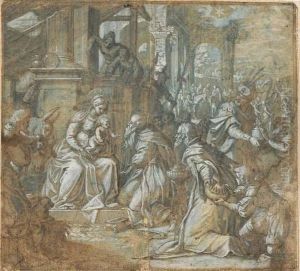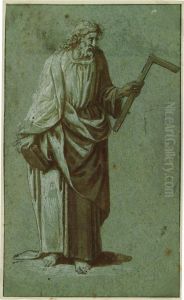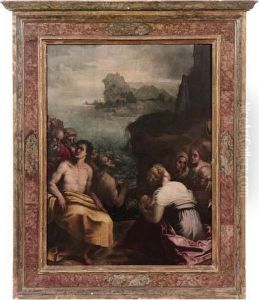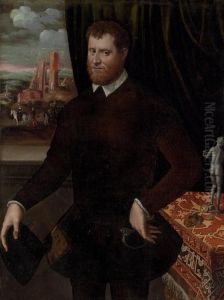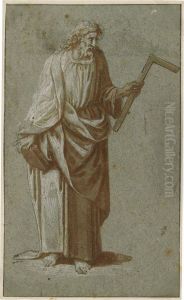Domenico Riccio Brusasorzi Paintings
Domenico Riccio, also known as Domenico Brusasorzi, was an Italian painter of the Renaissance, born in 1516 in Verona, Italy. He is often remembered for his significant contribution to the Veronese school of painting, which was characterized by its use of color and emphasis on detailed, narrative compositions. Brusasorzi's works are notable for their vibrant palettes and the delicate handling of light, which he used to enhance the emotional depth and realism of his subjects.
Domenico initially trained under his father, Francesco Riccio, before continuing his artistic education with the prominent Mannerist painter Giulio Romano, who had a profound influence on his style and technique. This training period was crucial in shaping Brusasorzi's approach to painting, blending the High Renaissance ideals of harmony and proportion with the more expressive and dynamic elements of Mannerism. Throughout his career, Brusasorzi developed a distinctive style that stood at the crossroads of these two influential artistic movements.
Brusasorzi's body of work encompasses a variety of subjects, including religious scenes, mythological stories, and portraits. He was particularly adept at creating large-scale altarpieces and frescoes for churches and other public buildings in Verona and its surroundings, which helped cement his reputation as one of the leading artists in the region. Among his most celebrated works are the frescoes in the church of San Bernardino in Verona and the altarpiece for the church of San Nazaro e Celso, which showcase his skill in composition and his ability to convey deep spiritual themes with elegance and sensitivity.
Despite his success, Domenico Brusasorzi remains a somewhat elusive figure in art history, overshadowed by his contemporaries in the more dominant artistic centers of Italy. Nevertheless, his contributions to the Veronese school and the broader Italian Renaissance are undeniable. His works are characterized by their innovative use of color and form, which would influence the development of later generations of artists in Verona and beyond. Brusasorzi passed away in 1567, leaving behind a legacy that continues to be appreciated by art historians and enthusiasts alike for its beauty and historical significance.
